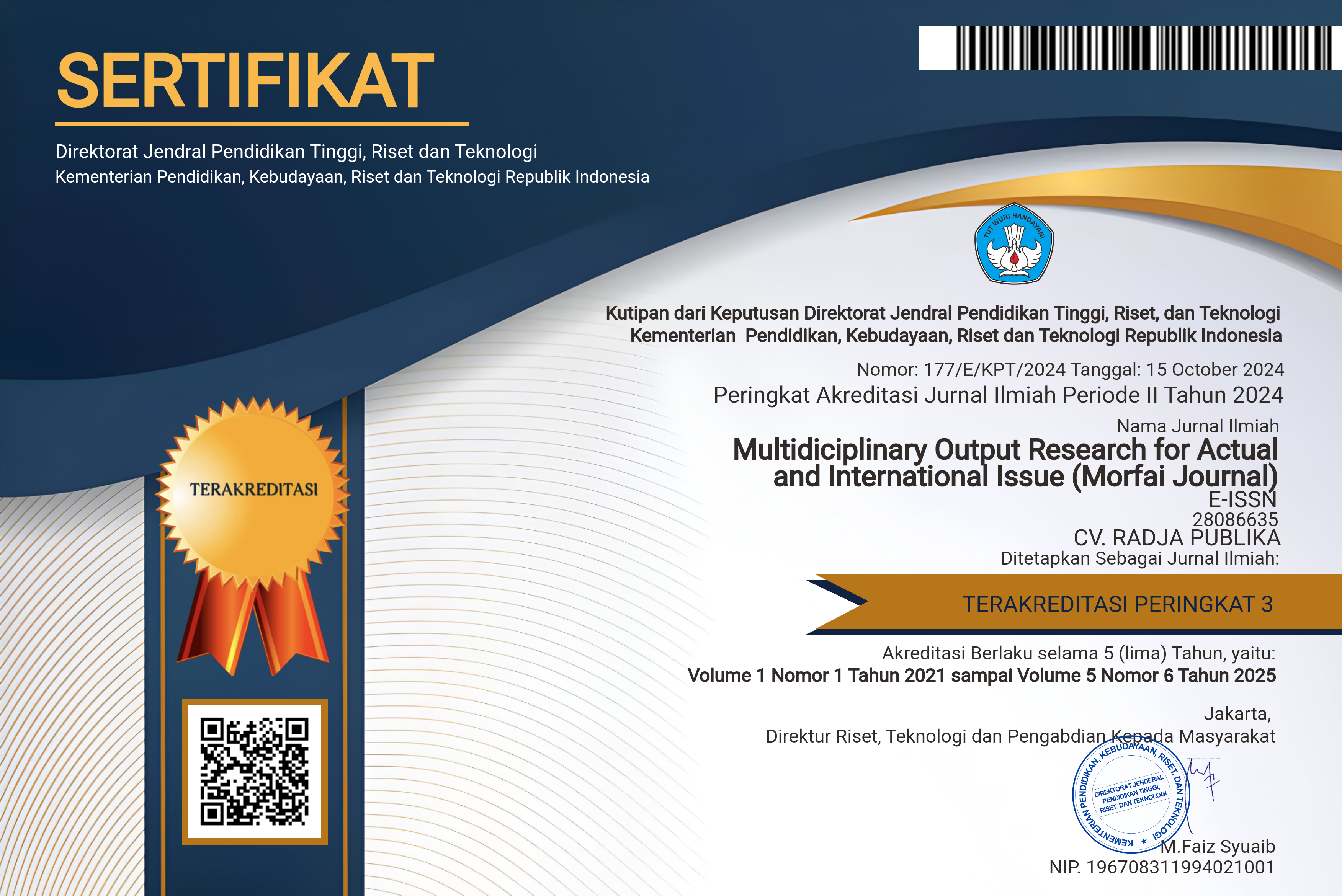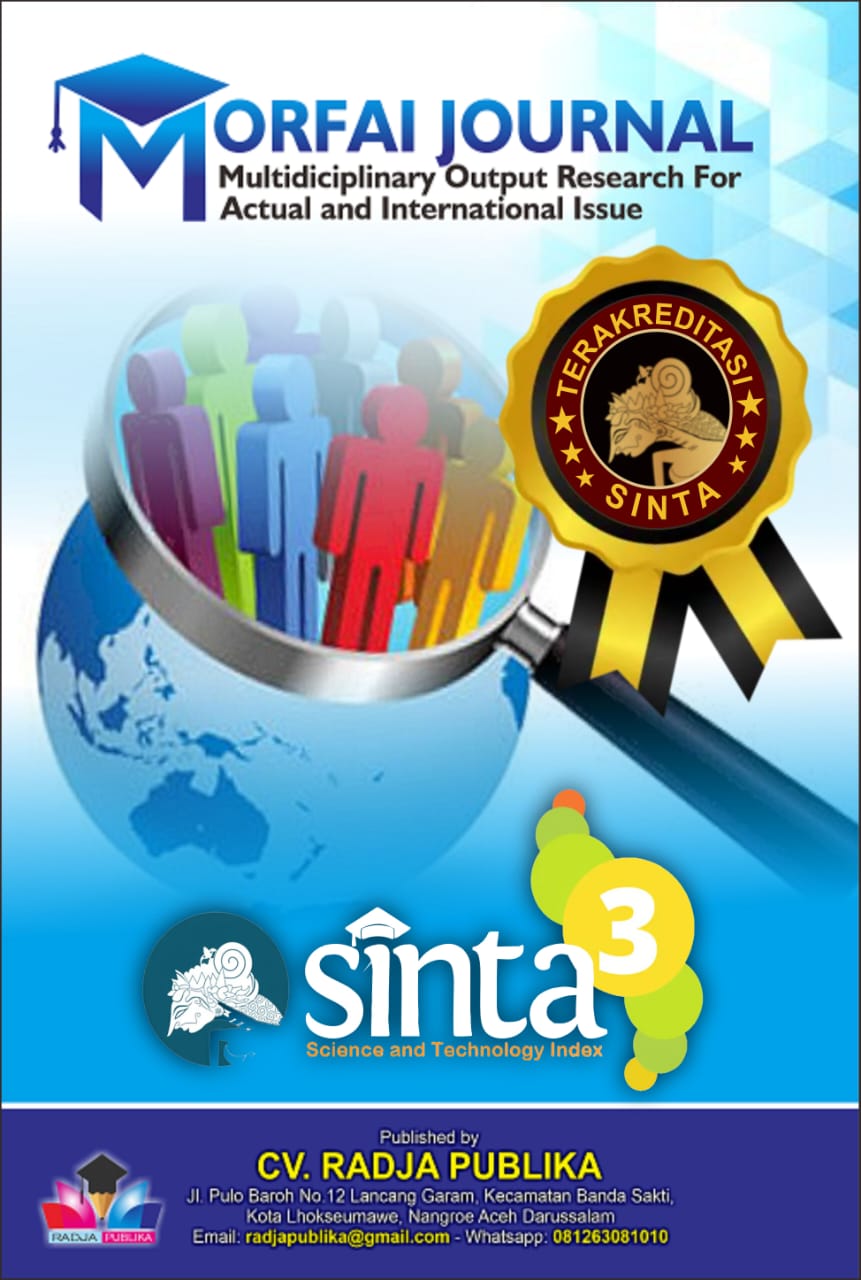THE LEVEL OF FOOTBALL ANALYSIS ON THE OPTIMAL DEVELOPMENT PERIOD OF THE GOLDEN AGE (DYSMENORRHEA) OF ADOLESCENTS AGED 13 TO 17 YEARS
Main Article Content
Adelia Utama Bastian
Reza Adhi Nugroho
Football is one of the sports that can support physical, mental, and social development, especially during the optimal development period (golden age) of adolescents. This period, which occurs at the age of 13-17 years, is an important period in physical development and motor skills. This study aims to analyze the effect of football on the optimal development of female adolescents in this age range. The study used a cross-sectional method involving 60 female adolescents who actively participated in football training at a football school in Central Java. The data collected included physical development (height, weight, and nutritional status based on BMI/age), motor development (balance, agility, and muscle strength), and social development (team interaction and self-confidence). The results showed that participation in football had a significant effect on physical development (p<0.05), motor (p<0.01), and social (p<0.01). This study concluded that football provides positive benefits during the optimal development period of female adolescents, especially in the physical, motor, and social aspects. Longitudinal studies with a larger population coverage are needed to identify appropriate training strategies to maximize development without increasing the risk of injury. Future research could explore the specific mechanisms through which football training influences these developmental aspects in female adolescents. It would be valuable to investigate whether the observed benefits are unique to football or if similar effects could be achieved through other team sports. Additionally, examining the long-term impact of sustained football participation on female adolescents' overall health, academic performance, and career prospects could provide valuable insights for policymakers and educators.
Bompa, T. O., & Buzzichelli, C. A. (2023). Periodization: Theory and methodology of training. Human Kinetics.
Bosco, C., Komi, P. V., & Ito, A. (2023). Neuromuscular performance in sprinting and jumping. Journal of Sports Medicine, 11(2), 113–130.
Côté, J., & Hancock, D. J. (2016). Evidence-based policies for youth sport programmes. International Journal of Sport Policy, 8(1), 51–65. https://doi.org/10.1080/19406940.2014.919338
Field, A. (2023). Discovering statistics using IBM SPSS statistics. Sage Publications.
García, L., Thompson, A., & Wilson, S. (2019). Psychological benefits of football for teenage girls. Psychology of Sport and Exercise, 45, 123–132.
Gu, X., Fu, Y., Chen, W., Tamplain, P. M., Zhang, T., & Wang, J. (2020). A Causal Pathway of Physical Activity to Motor Competence in Childhood:Evidence from a School-based Intervention. Journal of Sports Sciences, 39(4), 460–468. https://doi.org/10.1080/02640414.2020.1826666
Heyward, V. H., & Gibson, A. L. (2023). Advanced fitness assessment and exercise prescription. Human Kinetics.
Jones, K., & Smith, R. (2017). Gender norms in sports: Barriers and opportunities for girls. Social Sport Studies, 25(3), 289–305.
Larson, R. W., & Verma, S. (1999). How children and adolescents spend time across the world: Work, play, and developmental opportunities. Psychological bulletin, 125(6), 701-736. https://doi.org/10.1037/0033-2909.125.6.701
Malina, R. M., Bouchard, C., & Bar-Or, O. (2004). Growth, maturation, and physical activity. Human Kinetics.
Miller, T., & Thompson, J. (2020). Football and adolescent well-being: The role of social integration. International Journal of Adolescent Health, 27(1), 75–90.
Morgenroth, T., & Ryan, M. K. (2018). Addressing gender inequality: Stumbling blocks and roads ahead. Group Processes & Intergroup Relations, 21(5), 671-677. https://doi.org/10.1177/1368430218786079
Reverberi, E., D’Angelo, C., Littlewood, M. A., & Gozzoli, C. F. (2020). Youth Football Players’ Psychological Well-Being: The Key Role of Relationships. Frontiers in Psychology, 11(November), 1–11. https://doi.org/10.3389/fpsyg.2020.567776
Santrock, J. W. (2022). Adolescence: An introduction. McGraw-Hill Education.
Schmidt, R. A., & Wrisberg, C. A. (2024). Motor learning and performance: A problem-based learning approach. Human Kinetics.
Steinberg, L. (2014). Adolescence. 10th ed. McGraw-Hill Education.
Sugiyono. (2023). Metode penelitian kuantitatif, kualitatif, dan R&D. Alfabeta.
Weiss, M. R., & Stuntz, C. P. (2004). A developmental perspective on motivation in youth sports. Journal of Sport and Exercise Psychology, 26(3), 531–551.
Wilson, S. (2018). Addressing gender inequality in sports facilities. Journal of Gender and Sport, 12(6), 245–256.









